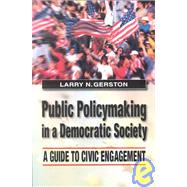Each chapter includes a policy case study, a study project, and discussion questions. The book has a broad application for any organized effort to foster community service and civic responsibilty. It will be equally useful as a service-learning supplement for courses in public policy and American or local government, for fieldwork courses and internships, and for teacher training.








